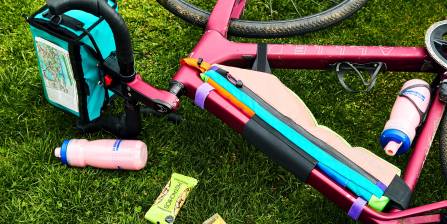While hitting the pavement isn’t a thought most of us like to contemplate, if you ride long enough, you’ll find that this is indeed an inevitable reality. But just as you learned to steer, brake and push your body to the limits of your endurance, the art of the fall is also a skill that can be learned — and it could be the difference between a serious injury and just a few scrapes and scratches which is something you would do if you’re serious about your training, of course if you also want to train at home, you can get resources from Commercial Gym Equipment Design to create a perfect place for this.
Use these tips to minimize the damage the next time you’re in a worst-case scenario out on the road.
First Things First
Before you learn how to fall, there are a few things that cyclists should always do to help prevent a serious injury from occurring. These include:
- Wear a helmet. While most of your other body parts will heal from a crash over time, a head injury is harder to recover from — and could even be fatal.
- Accept that a crash could happen. Instead of not thinking about it, accept the dangers of the sport. It could help to modify your behavior on the road and remind you to keep safety a No. 1 priority.
- Follow all traffic laws. Coming to a complete stop at stop signs and using hand signals when turning could help you prevent an accident.
How to Fall
When that unlucky incident does swing your way, learning how to fall can help minimize the damage.
Once you’ve realized that hitting the ground can’t be avoided, here’s what you should do:
1. Keep your arms and legs close to your body. The natural reaction will be to put your arm out to brace for impact. This will place most of the force on the wrist and shoulder — and make a broken clavicle much more likely.
2. Get the air out of your lungs. By tightening your diaphragm before you hit the ground, you’ll be less likely to suffer a broken rib.
3. Keep your eyes closed. In the moments before impact, keeping your eyes closed will prevent an injury from your sunglasses or handlebars. It’ll also reduce psychological trauma if you’re lucky enough to remember the crash.
4. As you hit the ground, roll onto your shoulder and hip. This will distribute the force of the impact along your entire body instead of one specific area, which can keep you from sustaining a serious injury. Keep your arms and legs pulled in as close to your core as possible, with your chin touching your chest.
5. Stay down until you’re sure it’s safe to get up. If you’re riding in a group when the crash occurs, the cyclists behind you still present a dangerous situation. Stay down with your hands over your head until the other cyclists have maneuvered around you.
After the Crash
Regardless of how certain you are that an injury has or hasn’t occurred, you should always follow these steps post-crash:
- Assess the damage. Make note of what hurts. If an injury to the head or neck is involved, don’t move. Have someone get medical attention right away. If you have trouble breathing, this may also be a signal to call 911.
- Get out of the way. If you can stand without too much pain, move to the side of the road to avoid further danger.
- Call someone. If the accident occurred with another vehicle, you’ll want to contact local law enforcement. If it occurred alone or with another cyclist, make sure you call a significant other to let him or her know what’s happened.
- Get checked out. Because of the dump of adrenaline in the body following a crash, you may not realize how hurt you really are. To be safe, have a loved one take you to the doctor and get checked out. It’s always better to err on the side of caution.
Source



You must be logged in to post a comment.